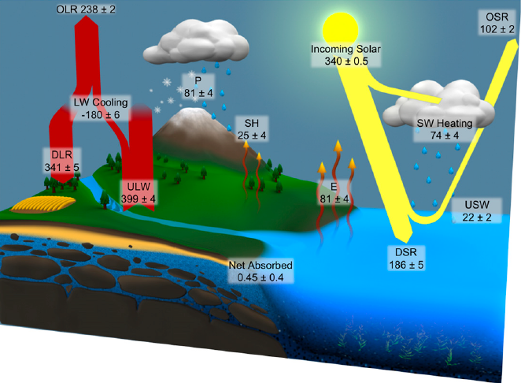Energy Balance
Introduction
Reconstructing the Energy and Water Cycles
Efforts to balance the Earth’s energy budget using observational datasets result in unrealistically large imbalances both within the atmosphere and at the surface where net radiation at the surface tends to significantly exceed the associated turbulent heat fluxes, particularly over the global oceans. These imbalances arise from the fact that measures of the component energy fluxes are typically derived independently and all have uncertainties. Under NASA’s Energy and Water Cycle Study (NEWS) we are working with a large team of investigators to reintroduce energy and water cycle closure constraints in modern reconstructions of Earth’s energy budget and water cycle. The resulting balanced global and regional energy and water cycles provide a resource for studying variations in continental and ocean basin on seasonal to multiyear timescales.
The Role of Cloud Phase in Earth's Energy Budget
The effects of clouds on Earth’s energy budget depends strongly on the relative partitioning of liquid and ice phases within them. Separating the contributions of liquid, ice, and mixed-phase clouds to global cloud forcing has, however, been very challenging due to the inherent difficulty in discriminating cloud phase from satellite sensors. Using the combination of active and passive sensors in the A-Train, our group is computing the radiative effects of the complete spectrum of global cloud regimes and determining their influence on different aspects of the climate such as the general circulation shown at the left. Interestingly, while mixed-phase clouds comprise only 8% of total cloud occurrence, they account for nearly 20% of the global mean SW and LW cloud radiative effects.



